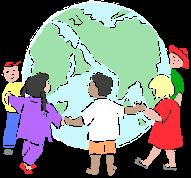Velvet paintings. Yes, they are mocked because they are not considered art. Because of mass production and commercialization, this art was not about the art; it was about the quantity produced and the popularity of the item being drawn. Maybe if it hadn’t of been so commercialized and it had portrayed the feelings or the environment of the artist instead of American pop culture icons, it could have been appreciated as quality art. Perhaps because it was cheap to buy, found in bars and dime stores, people lost interest in this type of artwork and now they make fun of it. No matter how we feel about this art form now, there was a time when it was popular to own velvet paintings.
While reading Quinones (2007) book, I couldn’t help but wonder if this was just another way people have taken advantage of uneducated workers in another country; however, this production provided some workers in Mexico with a good paying job and allowed some to use their artistic skills. When the fad was over, though, these people were left with nothing. Of course, the importers were also hurt by the fall of public interest in the velvet paintings. To quote Doyle Harden (Quinones, 2007), an American importer, “In Alaska, the aurora borealis will change shape as you stand there looking at it. Well, our lives were that way, too.” Interest in velvet paintings changed quickly and many people who relied on it lost their income and way of life.
How do we, as teachers, respond to an ELL student who has been ridiculed when he or she shares this family tradition within the school environment?
Teachers need to create an environment in the classroom that respects cultures from the beginning of the school year. Each student should feel that they are respected and they are accepted for who they are. Their languages, foods, artwork, music and home country should be recognized and appreciated. Each student could create an autobiography that can be shared with the class. I love the idea of having a map of the world on which each student could flag their home county. This builds cultural awareness and is a great geography lesson. The teacher can ask students to share how to write their name in the home language or how to say words in their home language. Students have to feel a sense of belonging in the classroom.
If this type of ridicule still happens, then create an opportunity for the students to learn about this tradition. Invite the student to bring in some of the art and invite their family member to come and present a demonstration on painting on velvet. Also, provide an art experience for the students to create their own velvet art. Let the students learn about it and they will be less likely to ridicule this art or the other student.
You can visit the “Velveteria” museum of velvet paintings on line at http://velveteria.com/ Make sure you watch the videos from Bill Giest, CBS “Sunday Morning” and Andrew Zimmern, Travel Channel on this web site.
05 June, 2009
Subscribe to:
Post Comments (Atom)

I had similar thoughts when I first read the book. It does seem like an opportunistic way to exploit the undereducated. This happens all too often and when you think about it - it is still going on today with the illegal workers.
ReplyDelete